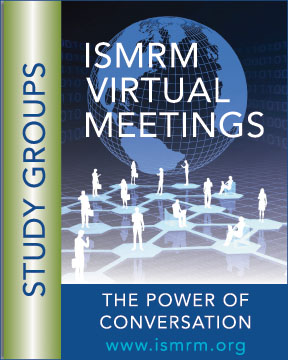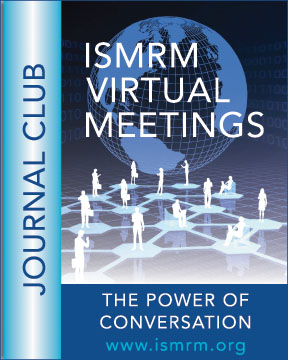ISMRM & ISMRT Virtual Meetings

🕗 Registration closes the day before a given meeting at 19:00 UTC and is limited to ISMRM & ISMRT members unless otherwise noted.
Our Next Virtual Meeting:
ISMRT Virtual Meetings
21-25 July 2025 at 20:00 UTC
Registration is FREE for members & non-members.
The last week in July is universally recognized as MR Safety Week, inspired by the anniversary and 2001 tragic MRI-related death of Michael Colombini, age 6, resulting from a steel oxygen cylinder being brought into the MRI room during his exam. The initial goal of this week was to prevent such a tragedy from happening again and has expanded into a week-long event giving us a chance to refresh our safety education and highlight some of the issues we all face in the MR environment.
Future Virtual Meetings:
Check back frequently for more details and meeting announcements.
Looking for past Virtual Meetings?
Curious what topics have been covered before?
Go to the Virtual Meeting Archive
The ISMRM is accredited by the Accreditation Council for Continuing Medical Education (ACCME) to provide continuing medical education for physicians.
The International Society for MR Radiographers & Technologists (ISMRT), A Section of the ISMRM, is recognized by the American Registry of Radiologic Technologists (ARRT) as a Recognized Continuing Education Evaluation Mechanism (RCEEM).
🕑 A NOTE ABOUT TIME 🕖
All times on this page are shown first in UTC, followed by your local time zone. This conversion is done in-browser; no location information is sent to ISMRM. If the local times are inaccurate, check your device's time zone settings:
If the you see "Invalid date" messages, your browser may be blocking the javascript used to make the time conversion. Please either turn off your script blocker or whitelist ismrm.org.
The ISMRM is committed to providing opportunities for its members to connect, engage and develop. As an ISMRM member, you have access to:
 Study Group Virtual Meetings:
Study Group Virtual Meetings:
A platform for our 34 study groups, established to foster interaction among members with a common interest in topical and active areas of MR. Topics for discussion come from the study groups with discussion and debate promoted by expert moderators, with contributions from the virtual audience. Registration is open to all ISMRM & ISMRT members, with priority given to members of the respective Study Group.
Journal Club Virtual Meetings:
 A platform for a dynamic, international, cross-cutting journal club moderated by experts in the field. The papers for discussion come from the Society’s two journals with live access to the authors. Discussion and debate are promoted by expert moderators, with contributions from the virtual audience. Registration is open to all ISMRM & ISMRT members.
A platform for a dynamic, international, cross-cutting journal club moderated by experts in the field. The papers for discussion come from the Society’s two journals with live access to the authors. Discussion and debate are promoted by expert moderators, with contributions from the virtual audience. Registration is open to all ISMRM & ISMRT members.
